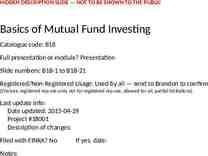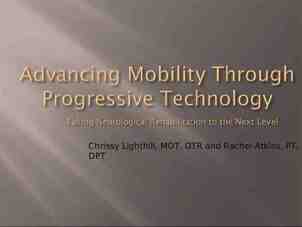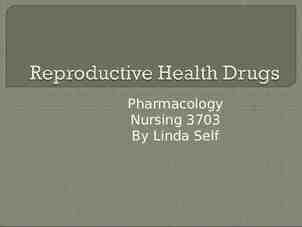Learning and Teaching Algebra in a Connected Classroom Douglas
25 Slides295.50 KB
Learning and Teaching Algebra in a Connected Classroom Douglas T. Owens1, Stephen J. Pape2, Karen E. Irving1, A. Louis Abrahamson3, Vehbi A. Sanalan1 1 The Ohio State University 2 University of Florida 3 Better Education Foundation The research reported here was supported by the Institute of Education Sciences, U.S. Department of Education, through Grant R305K050045 to The Ohio State University. The opinions expressed are those of the authors and do not represent views of the U.S. Department of Education. June 11, 2008 1
Additional Research Team Frank Demana, Co-PI, The Ohio State University Christy Boscardin, Joan Herman, Hye Sook Shin, David Silver, UCLA, CRESST; Clare Bell, & Melissa Shirley, OSU Mike Kositzke, Project Program Coordinator, OSU Ugur Baslanti, University of Florida Sukru Kaya, The Scientific and Technological Research Council of Turkey TI Navigator slides adapted from a presentation by Eileen Shihadeh, Texas Instruments June 11, 2008 2
CCMS Project Overview Interdisciplinary professional development and research project Algebra I and Physical Science Classroom connectivity technology Summer Institute – training T3 conference follow-up June 11, 2008 3
22-Mar-08 The TI-Navigator Connected Classroom The TI-Navigator System allows the teacher to: Create a collaborative learning environment Engage in formative assessment by way of immediate feedback Enhance classroom management of TI graphing technology June 11, 2008 4
Background of CCMS Study Changing conception of mathematics competence (Kilpatrick, Swafford, & Findel, 2001) Changing roles for teachers include Thinking beyond skills-based conceptions Setting norms for discourse Using problem solving and inquiry to support knowledge construction Using formative as well as summative assessment Developing student self-regulated learning June 11, 2008 5
Theoretical Framework Social-constructivist models of teaching and learning Technology-assisted formative assessment Classroom environments that foster self- regulated learning and mastery orientation Classroom discourse processes Classroom environment centeredness constructs June 11, 2008 6
Prior Research (Roschelle, Penuel, & Abrahamson, 2004) Students: Increased student engagement, understanding, and interactivity Improved classroom discourse Knowledge of classmates’ learning Teachers: Improved pre- and post- assessment of student learning Increased awareness of student difficulties Improved questioning June 11, 2008 7
Audience Response Systems in Academic Settings Increases in Student attendance and participation (Burnstein & Lederman, 2001) Student comprehension (Hake, 1998; Slain et al., 2004) Student engagement (Dufresne et al. 1996) Collaborative learning (Mazur, 1997) Conceptual reasoning (Crouch & Mazur, 2001) Student satisfaction (Judson & Sawada, 2002) Technology-facilitated interactive engagement in ARS lecture classes is correlated with student conceptual gains (Judson & Sawada, 2002) June 11, 2008 8
Research Questions How does teachers’ use of connected classroom technology affect: 1. Student achievement in algebra 1? 2. Self-regulated learning strategic behavior? 3. Student views of mathematics? June 11, 2008 9
Research Design Year 1 (2005-2006) – Algebra I Randomized assignment to treatment and control/delayed treatment groups Cross-over design – control group provided treatment in second year of participation Mixed methodology June 11, 2008 10
Participants Initial data – 127 Algebra I teachers and 1,761 students from 28 states 81 (64%) teachers had complete data at the end of year 1 (Rx 39; C 42) 1,128 students from 68 classrooms (84% of 81) with adequate data (n 9; Rx 617; 50.2% female; C 511; 56.8% female) Initial and final samples were not different on teacher demographic characteristics Final sample treatment and control differ: free/reduced lunch and school location June 11, 2008 % 11
Teacher Demographic Information Original Randomized Sample No. of teachers % Female Treatment 61 Control 66 70.5 91.8 77.3 83.3 65.0 83.6 % White % Math majors X 12.3 SD 9.3 X 14.0 SD 9.9 6.6 7.2 9.3 8.0 % Free Lunch (at 25.1 26.2 24.2 20.2 % Minority (at school 23.0 29.5 23.7 26.8 Yrs Tchg Exper Yrs Alg Tchg school level) level) June 11, 2008 12
Teacher Demographic Information HLM Sample No. of teachers % Female Treatment 34 Control 34 70.6 70.6 97.1 73.5 88.2 82.4 % White % Math majors X 13.2 SD 7.2 X 15.6 SD 10.6 7.4 5.6 10.0 8.8 % Free Lunch (at 16.4 15.7 24.6 18.1 % Minority (at school 14.7 21.0 18.8 22.3 Yrs Tchg Exper Yrs Alg Tchg school level) level) June 11, 2008 13
Teacher Data Collection Demographic Information Form Technology Use and Professional Development Survey Teacher Instructional Practices and Beliefs Survey (TIPBS) Implementation—Teacher Interviews (inter-rater reliability ranged from .80 to 1.00) Level of content implementation June 11, 2008 14
Student Measures Algebra I pretest Algebra I posttest Total score Visual, Mechanical, and Pure Symbolic subtests Student Beliefs about Mathematics Motivated Strategies for Learning Questionnaire (Pintrich, Smith, Garcia, & McKeachie, 1991) June 11, 2008 15
Measures – Algebra I Algebra pretest – 30 item; 23 multiple choice, 3 short-answer, and 4 extended response Algebra post-test – 30 items; 24 multiple choice, 1 short-answer, and 5 extended response 11 items overlap between the pre- and post-tests Treatment Control X SD S SD Algebra Pre 18.80 5.00 18.30 5.80 .81 Algebra Post 21.40 7.20 18.90 7.20 .85 (36 maximum) (37 maximum) June 11, 2008 16
Student Views about Mathematics Treatment (n 442) (Scale 1 to 6 for all subscales) Control (N 515) Xpost SD Xpost SD Beliefs about Math 4.25 .57 4.18 .60 .82 Confidence 3.92 .92 3.88 .96 .69 Math Anxiety 3.67 .78 3.71 .75 .79 Usefulness 4.48 .94 4.47 1.04 .82 Self-Efficacy 4.55 1.07 4.35 1.13 .88 (14 items) (5 items) (5 items) (6 items) (4 items) June 11, 2008 17
Motivated Strategies for Learning Questionnaire 6 Motivation subconstructs Intrinsic/Extrinsic Goal Orientation; Task Value; Control of Learning Beliefs; Self-Efficacy; Test Anxiety Alpha range 0.67 to 0.92 5 Learning Strategies subconstructs Rehearsal; Elaboration; Organization; Critical Thinking; Metacognitive Self-Regulation Alpha range 0.73 to 0.80 4 Resource Management Strategies Subconstructs Time and Study Environment; Effort Regulation; Peer Learning; Help Seeking June 11, 2008 Alpha range 0.50 to 0.65 18
Data Analyses Cronbach’s alpha reliability estimates IRT analysis conducted to ensure technical quality of Algebra pre- & post-test Hierarchical Linear Modeling (HLM) to examine effect of treatment Accounting for nested data Pretest data included as covariate Two-level models consisting of within-class (level 1) and between-class (level 2) June 11, 2008 19
HLM analyses Level 1 Yij 0 j 1 j ( PREij PRE. ) ij ij N (0, 2 ) Level 2 0 j 00 01 (TREAT j ) 02 ( FreeLunch j FreeLunch.) 03 (Genderj ) 04 (Yteach j Yteach.) 05 (mPreAlg j mPreAlg.) u0 j 1 j 10 u0 j N (0, June 11, 2008 2 ) 20
Results Significant treatment effect (ES 0.30) after controlling for student pretest scores, teacher’s years of experience, teacher’s gender, and percent of free/reduced lunch Students taught by treatment group teachers performed about 2 out of 37 points higher than control students Level of teacher knowledge about students as a result of TI-Navigator use was positively related to with student performance (ES 0.36) Frequency and level of technology implementation as well as level of instructional change with technology were not associated with the outcome June 11, 2008 21
Results Teaching experience was positively associated with achievement Percentage free/reduce lunch not associated with outcome Students of female teachers performed higher than male teachers (ES .41) Level of content coverage (implementation) was not associated with student performance None of the other teacher survey constructs were associated with student outcome June 11, 2008 22
Results On visual dimension, after controlling for percentage of free/reduced lunch, positive association between outcome and Treatment status (ES 0.34) Frequency of technology use (ES 0.32) Level of teacher knowledge about students as a result of TI-Navigator use (ES 0.40) level of instructional change with technology (ES 0.48) For mechanical and pure symbolic questions, none of the variables were positively associated with the outcome June 11, 2008 23
Results (con’t) Treatment positively affected student Self-efficacy/math performance expectations with (ES 0.16) No differences for beliefs about mathematics, confidence, anxiety, or usefulness related to treatment No differences for motivation, learning strategies, or resource management strategies related to treatment June 11, 2008 24
You may download papers and PowerPoint from the project website at http://ccms.osu.edu/ June 11, 2008 25






























